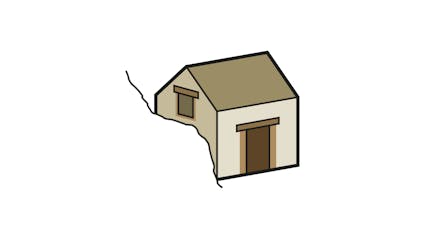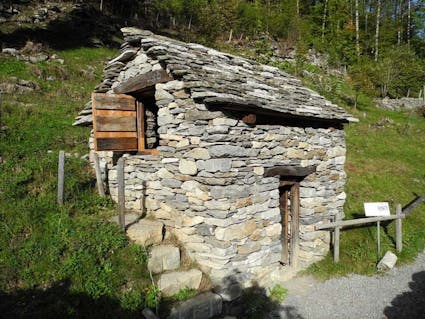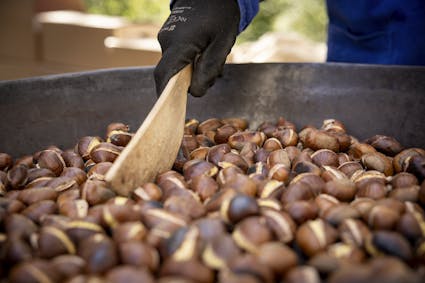842 – Chestnut-Drying House from Prato-Sornico/Lavizzara TI 19th Century
This little building stood in the Lavizzara valley on a steep slope at the edge of the Prato village.

100 Years Unused
This little building stood in the Lavizzara valley on a steep slope at the edge of the Prato village. It had not been used since about 1900, the wood was rotten, the roof leaked and the door was missing. Only its transfer to the Ballenberg Open-Air Museum saved the structure from impending doom. It began a new life here in October 2011.

House Without a Purpose
In earlier days of the community Prato-Sornico there were four such “grà”, as they were called in the local dialect. In the present-day comprehensive community of Lavizzara there are still 32 of them. The “grà” no longer used for drying served as storerooms, goat stalls or small barns. In all of the Maggia valley there is but a single one in service and this mainly as a popular tourist attraction.
Small House, Great Importance
As in many valleys in Ticino or southern Grisons, e.g. Bregaglia, chestnuts were also in Prato a chief source of nourishment during the long winter months. The edible chestnuts (marronis) were rendered fit for storage in these simple buildings built in dry-wall stone masonry. This building material was resistant to the drying fi re kindled on the floor. There was a grating above upon which the chestnuts were distributed. The rising smoke and heat dessicated the nuts within two or three weeks.
What works for meat and sausage serves just as well for chestnuts. Following the gathering in October, smoke and a special scent wafted through many southern alpine villages.
Chestnuts – Poor Man’s Bread
In many European regions it was the potato which saved the population from starvation in past centuries. In the south, the chestnut belonged to the important foods, just as bread and maize meal. Sometimes various ingredients were combined: chestnut flour with rye flour baked into bread or chestnuts added to a stew. Chestnut trees are bountiful, in groves they yield nuts by the tonne. The nuts are nourishing, healthy, rich in carbohydrates, contain fat and protein and keep well.

Ballenberg
Swiss Open-Air Museum
Museumsstrasse 100
CH-3858 Hofstetten bei Brienz
Company holidays
24 December 2025 to 11 January 2026
Opening hours Administration
3 November 2025 to 8 April 2026
From Monday to Friday
8.30 am to 11.30 am
1.30 pm to 4.30 pm
Opening hours
9 April to 1 November 2026
10 am to 5 pm daily